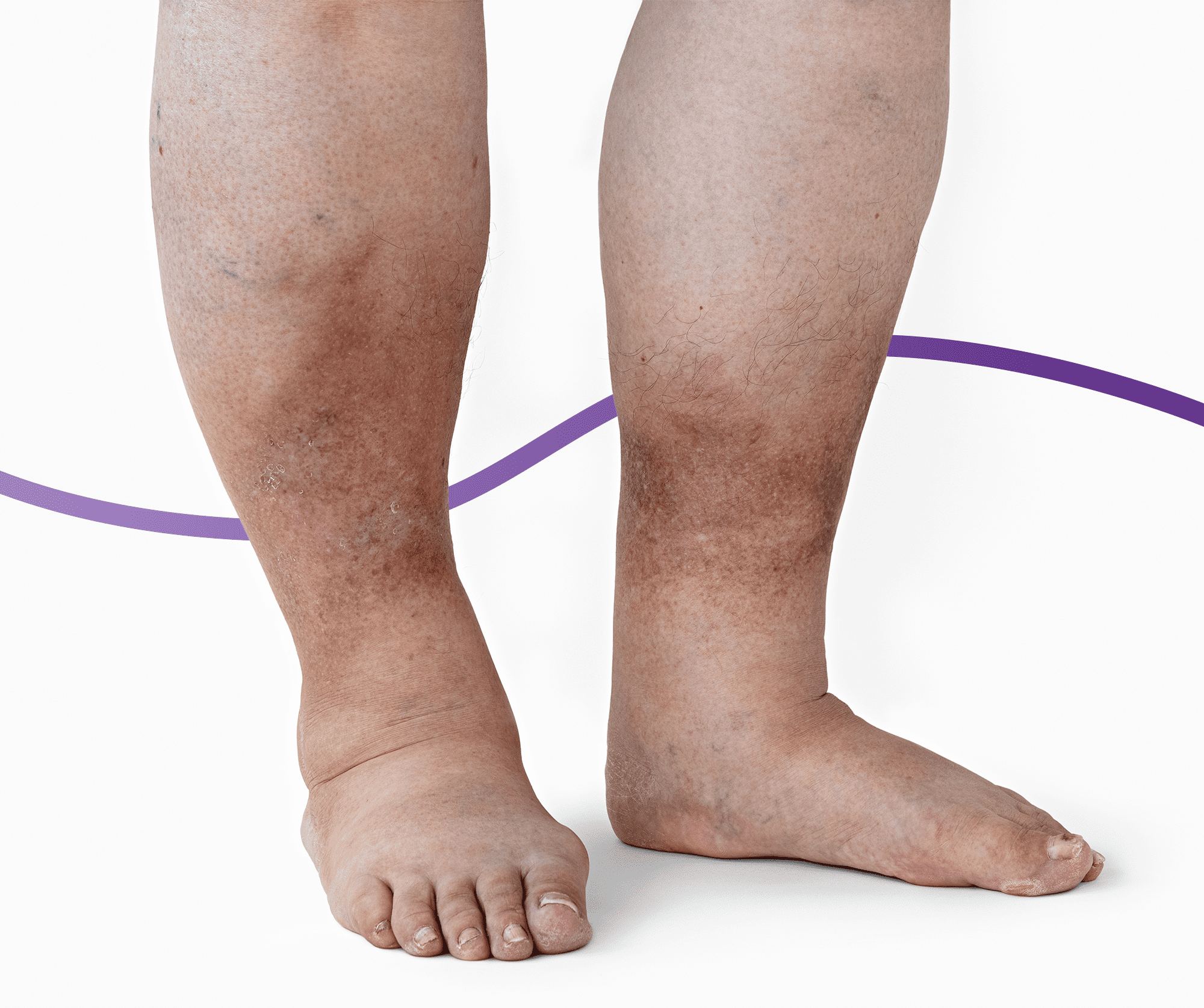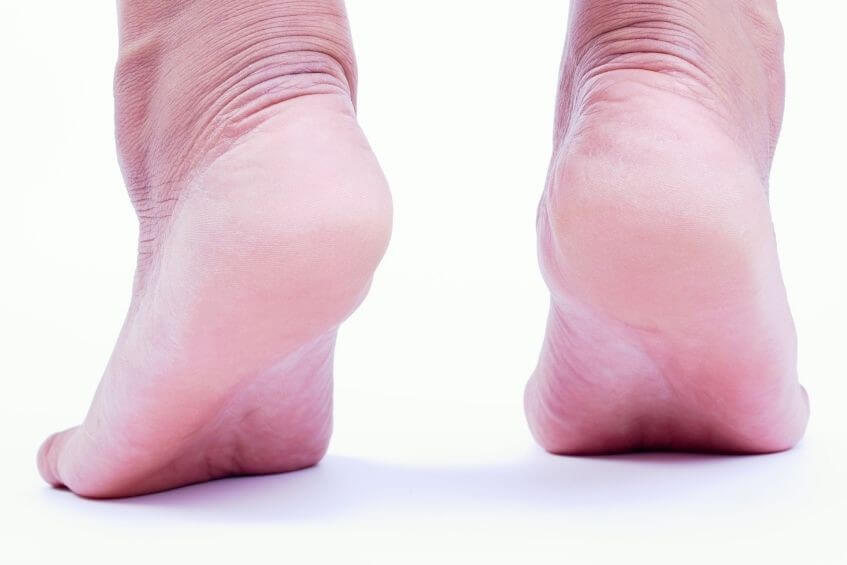
Jump to section
When many people think of diabetes, they think of keeping their blood sugar under control using diet, exercise, insulin, and other
factors. So it comes as a surprise to many that diabetes also poses a significant risk to your feet, so much so that Australians suffer more
than 4,400 diabetes-related amputations each year - that’s 12 per day, 85% of which are preventable. This is one of the reasons why
working with a podiatrist to understand your risks, monitor your progress, and help
protect your foot health is vital if you have diabetes.
There are two primary ways in which diabetes affects the feet, which can put you at risk of a wide range of pains, problems and complications:
The nerves in our feet and legs are responsible for our sensation, meaning our ability to feel and detect everything our feet come into contact with, from the soft feeling of putting on our socks, to painful abrasions and the sharp pain of standing on a splinter. The effects of diabetes can damage the nerves to our feet, which means that our ability to feel can worsen, become mixed up, and may eventually be lost altogether. This is called peripheral neuropathy.
Neuropathy can present as numbness, burning, tingling, or pins and needles that can come on at any time, not just when you’re standing. The most dangerous sensation change is the complete absence of feeling around the feet, as opposed to a numb feeling where you still detect some pressure and other changes. When the feeling in your feet is lost entirely, it means that you can sustain a wound, not know that it is there, and hence not take the right measures to disinfect it, dress it and help it heal. This puts your feet at significant risk of complications.
Alongside damaging the nerves, the effects of diabetes also commonly damage the blood vessels, meaning that your circulation to the feet can become impaired. A reduction in your circulation means that your tissues don’t receive the regular, healthy amount of blood (with the oxygen, nutrients and immune cells) they need to thrive and effectively carry out their essential cellular processes. You may notice changes in the feet like a pale, dry skin appearance, brittle toenails, perpetually cold feet, and a lack of hair growth on the toes.
The effects of diabetes on a person’s sensation and circulation can lead to a range of foot issues including:
Without the ability to detect when we hurt ourselves or cut our feet, this can easily leave people with wounds that go unnoticed, particularly when it’s on the underside of the foot, or the back of the heel. When we don’t know we have a wound, we don’t know that we need to take care of it, and it may end up worsening instead of getting better.
Without a good blood supply to any wounds, this can slow wound healing, leaving wounds open for longer which increases their risk of infection.
Infections start when bacteria enter the body through breaks in the skin. When infections are not properly managed, they can quickly turn serious and lead to complications like cellulitis and sepsis, spreading through the bloodstream. Secondary infections can also develop, and it is more difficult for your body to clear any infections with or without antibiotics because of the impaired blood flow.
Wounds that are slow to heal and have poor circulation to them have an increased rate of ulceration, which is why up to 20,000 Australians are estimated to have a diabetic foot ulcer at any one time.
Diabetic foot disease is the leading cause of lower limb amputations in Australia aside from trauma. When you have a slow healing ulcer, and an increased risk of infection, your risk of amputation as a result of unmanaged wounds and infection increases.
The effects of diabetes on the nerves and circulation can cause the skin to become dry, and the toenails to become brittle.
The increased risk of infection in diabetes also extends to more superficial infections including fungal nail infections and an Athlete’s foot fungal skin infection.
Diabetes can also make existing foot problems more serious. Common examples include corns and callus on high pressure areas on the bottom of the feet, where you’d normally be able to detect that the level of skin build-up has become painful and requires treatment before damage occurs. Due to the effects of diabetes you may no longer be able to detect this tipping point. We see similar scenarios in those with bunions and hammertoes, whose feet are prone to rubbing against their shoe, and can no longer detect when this has become painful or dangerous for their foot health.
Another serious complication of diabetes is charcot foot, where the bones in your feet weaken, fracture and dislocate - essentially collapsing. Unfortunately, many people cannot detect this process is happening, and it is often too late when it is detected and their feet have undergone a permanent change to their structure and function, often referred to as developing a ‘rocker bottom’ foot.
Aside from your annual diabetic foot health check, we highly recommend coming in to see a podiatrist any time you notice any new cuts or wounds on your feet that have not shown signs of healing after 2-3 days, that are swollen, red or painful, or anytime that you have concerns regarding your foot health. With diabetes, it’s best not to delay getting your feet seen or cared for, to help you get the best outcomes, as so many diabetic foot problems and complications are preventable.
You can book in with one of our podiatrists in Brisbane City or Newmarket here.
People with diabetes must take extra precautions to help look after their feet. The symptoms of diabetes progressively worsen over many years, and how quickly this occurs is often influenced by how well controlled the diabetes and blood sugar is, alongside other factors. To help look after your foot health, we recommend:
Aside from your annual diabetic foot health check, we highly recommend coming in to see a podiatrist any time you notice any new cuts or wounds on your feet that have not shown signs of healing after 2-3 days, that are swollen, red or painful, or anytime that you have concerns regarding your foot health. With diabetes, it’s best not to delay getting your feet seen or cared for, to help you get the best outcomes, as so many diabetic foot problems and complications are preventable.
You can book in with one of our podiatrists in Brisbane City or Newmarket here.

Our feet are the foundation for the entire body, so it's important that they have enough strength to tolerate our activity levels. Use
these three exercises to help strengthen your feet.

Not everyone needs orthotics, but they can play an integral role in treating or relieving pain in several foot and lower limb conditions.

The heat and humidity of an Australian summer makes it a prime time for issues to arise, so our newest podiatrist Lucy has put together
seven helpful tips to keep your feet healthy and problem free throughout summer.
| Monday | 7:40am - 6:00pm |
| Tuesday | 7:40am - 6:00pm |
| Wednesday | 7:40am - 6:00pm |
| Thursday |
7:40am - 6:00pm |
| Friday | TEMP CLOSED |
| Saturday | CLOSED |
| Sunday | CLOSED |
Ground Floor, 344 Queen Street,
Brisbane City QLD 4000
| Monday | 7:40am - 6:00pm |
| Tuesday | 7:40am - 6:00pm |
| Wednesday | 7:40am - 6:00pm |
| Thursday |
7:40am - 6:30pm |
| Friday | 7:40am - 5:00pm |
| Saturday | 7:40am - 4:30pm |
| Sunday | CLOSED |
Newmarket Village, 114/400 Newmarket Rd, Newmarket QLD 4051